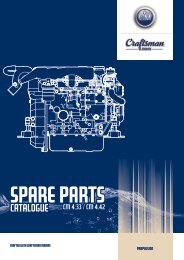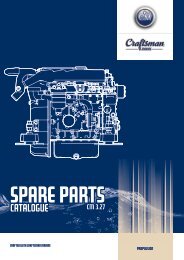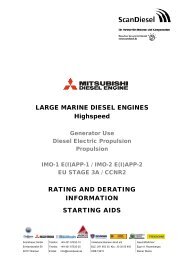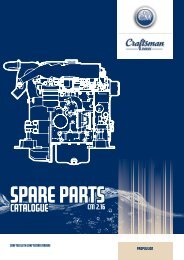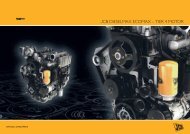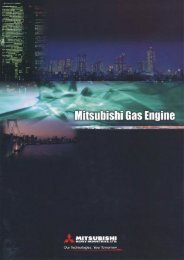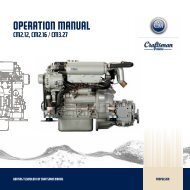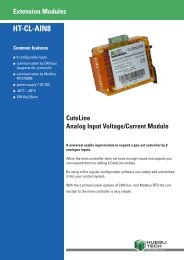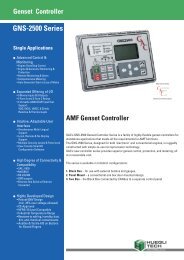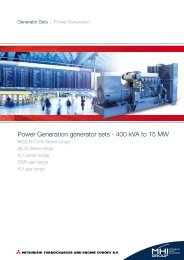CM4.65 & CM4.80 - Craftsman Marine BV
CM4.65 & CM4.80 - Craftsman Marine BV
CM4.65 & CM4.80 - Craftsman Marine BV
Create successful ePaper yourself
Turn your PDF publications into a flip-book with our unique Google optimized e-Paper software.
6<br />
Calorifier installation<br />
Calorifier in<br />
Engine<br />
Calorifier in<br />
Engine<br />
B<br />
Calorifier out<br />
Engine<br />
Calorifier out<br />
Engine<br />
A<br />
normal operation<br />
bypass operation<br />
Connecting a calorifier to the engine Ball valves Header tank and bleeding<br />
Calorifier/water heater connection points come fitted as<br />
standard on this engine. It’s important that the calorifier<br />
is installed according to the installation manual<br />
provided by the manufacturer.<br />
The engine coolant connection on the calorifier should<br />
be connected to point A, the coolant return should be<br />
connected to point B.<br />
In case of a malfunction of the calorifier or one of its<br />
components it’s important that it can be disconnected<br />
from the engine’s cooling circuit. It is advised to add<br />
ball valves and a bypass line. In normal operation the<br />
bypass line is closed. When the coolant lines to the<br />
calorifier are closed, the bypass line must be opened,<br />
otherwise, part of the engine cooling circuit is interrupted<br />
(see schematic above).<br />
Note that the ball valves should not restrict the<br />
waterflow and must have a minimum ID of 12mm.<br />
With the calorifier installed a header tank must be<br />
added to the cooling circuit of the engine. In case the<br />
water heater has to be placed above the engine header<br />
tank, the engine water hose circuit must be equipped<br />
with an air bleeder valve on the highest point.<br />
18 Crafted with CRAFTSMAN MARINE



